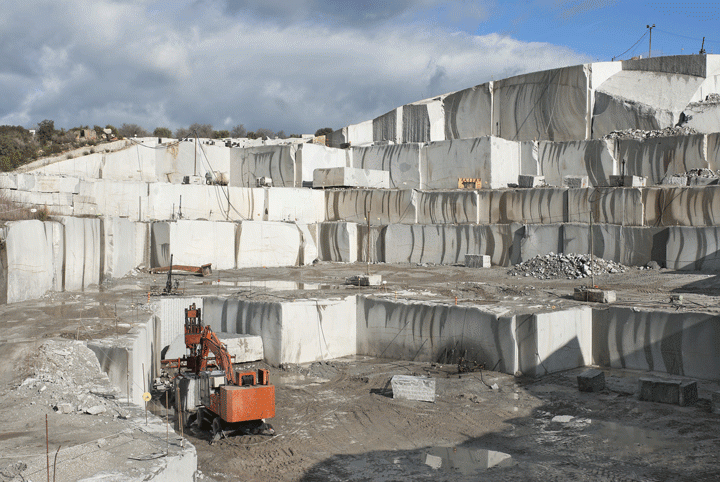Checking Out Granite Quarries in South Africa: A Comprehensive Overview
Checking Out Granite Quarries in South Africa: A Comprehensive Overview
Blog Article
Unearthing the Rich Background and Sustainable Practices of Granite Quarrying
As we depend on the precipice of discovering the detailed tapestry of granite quarrying, a journey via time reveals not simply the physical act of extracting stone yet also the social and historic significance woven right into the very textile of this method. From the old origins that laid the foundation for modern quarrying methods to the lasting methods that are shaping the future of this sector, each carve mark on granite surfaces narrates waiting to be unearthed (granite quarries in south africa). The tradition of granite quarrying stretches far beyond plain removal; it is a testimony to human ingenuity, durability, and the enduring allure of this majestic stone
Ancient Beginnings of Granite Quarrying
Going back to old civilizations, the practice of quarrying granite has been an important component of human background and building advancement. The earliest evidence of granite quarrying go back to ancient Egypt, where large pyramids and detailed sculptures were crafted from this durable stone. The Egyptians utilized primitive tools to extract granite blocks from quarries, showcasing the significance of this material in their significant buildings.
Progressing in history, the Greeks also made significant contributions to the quarrying of granite. The Greeks used granite in various architectural wonders, such as holy places and statues, demonstrating their skill in shaping and sculpting this durable rock. The Romans better improved the strategies of quarrying granite, utilizing sophisticated tools like chisels and hammers to extract and form granite for their legendary frameworks.
Via the centuries, the method of quarrying granite has developed, with modern technologies boosting performance while preserving the ageless appeal of this natural rock - granite quarries in south africa. From ancient people to contemporary home builders, the legacy of granite quarrying proceeds to form our world
Evolution of Quarrying Techniques
The evolution of quarrying strategies has been noted by a continual progression towards better performance and precision in extracting granite. From the rudimentary methods employed by our forefathers to the sophisticated modern technologies used in contemporary quarrying procedures, the market has gone through significant advancements. Early quarrying methods involved manual work with fundamental devices such as blades, hammers, and wedges to extract granite blocks from the earth. As civilizations proceeded, techniques like fire-setting and primitive nitroglycerins were introduced to promote the extraction procedure.
Improvements in computer-controlled tools and 3D modeling have actually maximized quarrying procedures, leading to very little ecological effect and enhanced sustainability methods. As the demand for granite continues to rise, the evolution of quarrying strategies continues to be indispensable to conference sector requires effectively and sustainably.
Cultural Significance of Granite
Granite holds a profound social value throughout different worlds because of its enduring look at these guys visibility in building masterpieces and admired monuments. From the magnificent pyramids of Egypt to the elaborate carvings of the Angkor Wat holy place in Cambodia, granite has been a material of selection for sharing magnificence and longevity in social heritage. In old Rome, granite columns decorated temples and public structures, representing strength and durability. The cultural relevance of granite expands past its physical characteristics; it embodies strength, stability, and eternity, making it a sign of enduring traditions and traditions.

Lasting Practices in Quarrying
In the middle of the rich background of granite quarrying and its cultural significance exists a growing emphasis on lasting methods within the industry. As ecological understanding and issues concerning source depletion have actually heightened around the world, the quarrying market has significantly accepted lasting techniques to minimize its influence on the atmosphere and bordering neighborhoods.

Additionally, improvement and rehab of quarry sites post-extraction are essential to sustainable practices. By restoring quarried locations to an all-natural or valuable state, such as developing wild animals environments or leisure spaces, quarriers can offset the environmental impact of their procedures and contribute positively to the Visit Your URL local ecosystem.
Heritage of Granite Quarrying
With a historic backdrop steeped in craftsmanship and industrial progression, what withstanding effect has granite quarrying left on the landscape of modern culture? The heritage of granite quarrying transcends mere removal methods; it has formed building marvels, city landscapes, and social heritage worldwide. The resilient nature of granite has made it a recommended option for monuments, structures, and facilities, standing as a testament to the ability and artistry of quarry employees throughout generations.
Moreover, the financial footprint of granite quarrying can not be forgotten. The market remains to give employment opportunities and drive regional economies in areas where granite extraction is widespread. It has also spurred technical improvements in quarrying techniques and tools, bring about a lot more efficient and lasting practices.
In terms of sustainability, the heritage of granite quarrying consists of initiatives to minimize environmental effects via reclamation jobs and liable source management. By balancing economic passions with ecological stewardship, the industry strives to make sure that future generations can remain to gain from this enduring natural resource.
Final Thought

Report this page